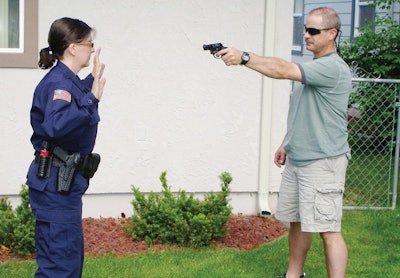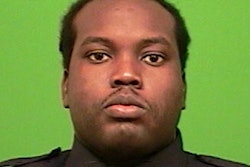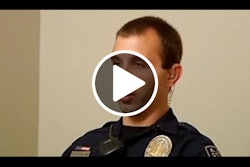 If you tell a suspect with his hands in his pockets, "Show me your hands," he could draw a gun too quickly for you to react. Photo: Howard Webb.
If you tell a suspect with his hands in his pockets, "Show me your hands," he could draw a gun too quickly for you to react. Photo: Howard Webb.
The truth is we all develop bad officer safety habits and we have to guard against them. There are two factors that lead us to adopt sloppy and dangerous habits on the job.
First, in most of the situations that we encounter on the job nothing bad happens. As a result, we don't experience a negative consequence from using tactics that we know are unsafe. Second, we adopt and deploy tactics without first contemplating their legitimacy or evaluating their effectiveness. And because we don't always experience a negative consequence from using a tactic that is purported to be tactically sound but isn't, we continue to deploy it. We become tactically lazy and dangerously gullible.
Enforcing the law is inherently dangerous. Therefore, developing bad officer safety habits is like playing Russian roulette: You can only beat the odds for so long-then you take a bullet.
The primary reason that we do things we know are tactically unsound is simple: We get lazy. It takes more effort to use good tactics. Tactical laziness gets more officers shot than any other preventable cause.
Let's take a look at three bad officer safety habits that get officers injured or killed:
- Standing in front of the door when you knock and
announce - Contacting people while sitting in your patrol car
- Sitting behind the steering wheel when running warrants, using the MDT (mobile data terminal) or computer, or when writing traffic citations
Standing in Front of the Door When You Knock and Announce
You know you should stand off to the doorknob side of a door (if it opens in) and to the hinge side of the door if it opens out. So, why don't you do it? Because it has become a bad habit. And it could be a fatal one.
I can give you countless examples of officers being shot through doors. One department had one officer killed and two officers wounded in two separate incidents in the same week during calls where officers stood in front of doors as they knocked and announced. The officers were responding to reports of domestic violence in both incidents.
In the first incident, the officer was shot through the front door with a high-powered hunting rifle. The bullet passed through his vest and killed him instantly. In the second incident, an FTO and his recruit stood shoulder to shoulder in front of the door as the FTO knocked and announced. The suspect fired multiple shots through the front door with a large-caliber handgun. The FTO was shot in the shoulder and the recruit received a non-life-threatening bullet wound to his neck.
I have a good friend who is an officer on the department in question. As we discussed the shootings, he told me: "I don't stand in front of the door and knock anymore. I stand off to the side and tap on the door with my extended ASP baton." I taught this officer building search and patrol tactics when he attended the academy. He was taught not to stand in front of the door. But like so many of us, he had gotten lazy and developed bad officer safety habits. Unfortunately, it took two attacks on officers for him to reevaluate his tactics.
Contacting People While Sitting in Your Car
You know this is dangerous. So stop doing it. Drive by the suspicious person, pull in behind him, park several feet away, get your lazy butt out of your car, call the person back to you, and use your car as a barrier. Then order the suspect to place his ID on the hood of your patrol car and step back. Don't take the ID from the suspect's hand and don't hand it back to him. Place it on the hood and let him pick it up.
Yes, this is a lot more work than driving up and calling the suspect over to your open car window. But it will also add years to your life. Think about it as a tactical wellness program.
Here's an example of what happens when you take the tactical path of least resistance.[PAGEBREAK]
An officer was shot in the head and killed by a pedestrian he had stopped for routine questioning. It was late in the afternoon when the officer pulled alongside a man and began to ask him a question. A moment later, the man took a step back, pulled out a handgun, and fired three shots at the officer at nearly point-blank range. "The shooting happened so suddenly that the officer did not have time to draw his weapon. That's how quickly the whole thing occurred," a local prosecutor said, calling the attack "an execution-style killing."
Sitting Behind the Steering Wheel While Running Warrants or Writing Citations
You may have been trained to sit behind the steering wheel to check a driver's status, check for warrants, or operate your computer. You may even have placed a driver in your patrol car's passenger seat while you wrote the citation. If you have developed any or all of these bad officer safety habits, reevaluate your traffic stop tactics.
Sure, these bad habits have not killed you...yet. But as several officers have found out too late, they can be fatal.
One sunny afternoon, an officer stopped a vehicle for speeding. The vehicle contained the driver and two passengers. As the officer sat behind his patrol car's steering wheel to check the driver's DMV status and run the passengers for warrants on the computer, a passenger exited the suspect vehicle, walked back to the patrol car, and shot and killed the officer. When the killer was arrested, he confessed that the officer was completely unaware of his presence when he shot the officer in the head.
In a similar incident, a deputy stopped a vehicle for speeding. Unfortunately, unbeknownst to the deputy, the driver was wanted for a shooting spree that had occurred a few hours prior in a town several hundred miles away. As the deputy sat behind the steering wheel of his patrol car to check the driver's status, the driver exited his vehicle and shot the deputy through the windshield multiple times. By the grace of God, the deputy's soft body armor stopped the bullets. With the deputy stunned from the blunt trauma of the bullets' impact, the driver was able to return to his vehicle and escape.
Meaningless Habits
Adopting and deploying tactics without first contemplating their legitimacy or evaluating their effectiveness can get you killed.
Let me give you a scenario: You see me standing on a street corner with my hands in my pockets and you think that I look suspicious. When you contact me, what is the first thing you ask me to do?
I have given this scenario to thousands of officers who have attended my training classes and instructor courses. Without exception, the officers answer: "Show me your hands." At which point, I pull a small training pistol from my pocket and point it at the officers. Their response is a wide-eyed "Oh shit" look on their faces.
During the awkward silence, I ask, "Now what?" Universally the officers reply: "Put your hand back in your pocket."
If you, like my students, answered, "Show me your hands" to the contact scenario, then you may find yourself also asking, "Why was I shot or taken hostage in the scenario?" The answer is that you did what you were taught and you accepted that tactic as legitimate and safe without considering the purpose of the tactic. Ordering a suspect to show you his hands has become a meaningless habit. Meaningless habits can get you killed.
Analyze the legitimacy of your tactic by identifying the concern that the tactic allegedly addresses and then determine if the tactic provides the best possible solution.
Back to our contact scenario. When you confronted me as the subject on the street corner, what was your concern? You were concerned that I may have a gun in my pocket. As you learned from my response of removing the gun and pointing it at you, ordering me to "show me your hands" was not the best possible tactical solution.
So if you feared that I had a gun in my pocket, what should you have tactically done? Here are my suggestions: (1) Tell me to keep my hands in my pockets. (2) Ask me if I have any weapons. (3) Order me to turn away from you. (4) Order me to slowly remove my right hand and then my left hand. (5) Secure my hands. (6) Perform a "Terry Frisk" for weapons.
The key to not developing bad officer safety habits is to identify your officer safety concerns and then deploy the best possible tactical solutions. Think through the scenarios and evaluate your tactics. If you find them wanting, it's time for change.
Howard Webb is an internationally recognized use-of-force expert and trainer who has an extensive law enforcement and training background. As the director of the Montana Law Enforcement Academy, he developed the first scenario-based academy training curriculum in the United States. He currently serves as the executive director of the American Council on Criminal Justice Training.














